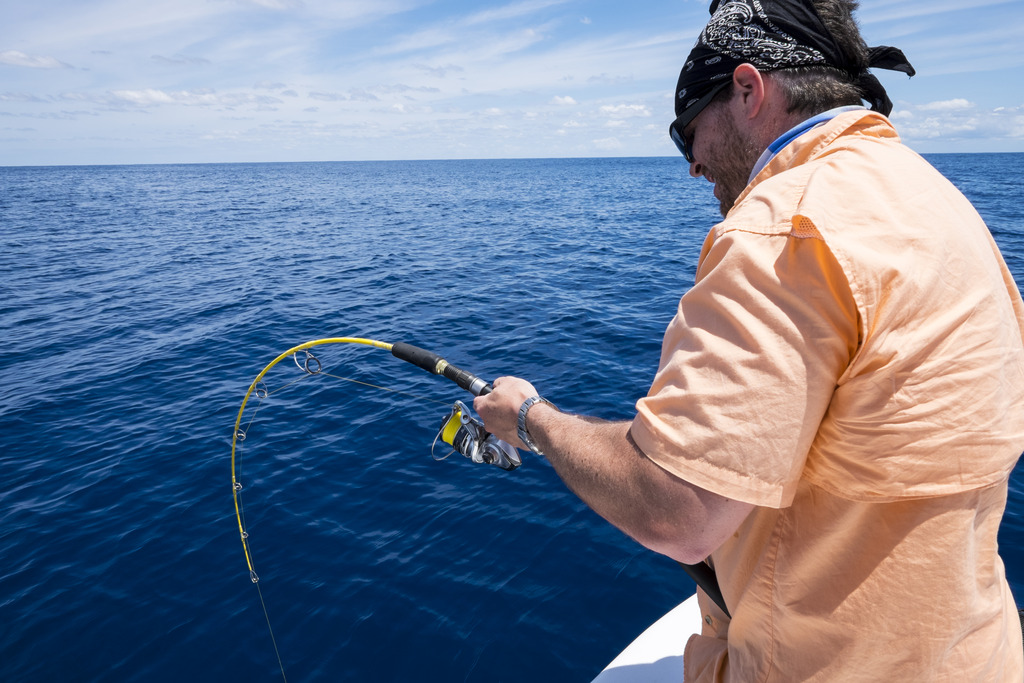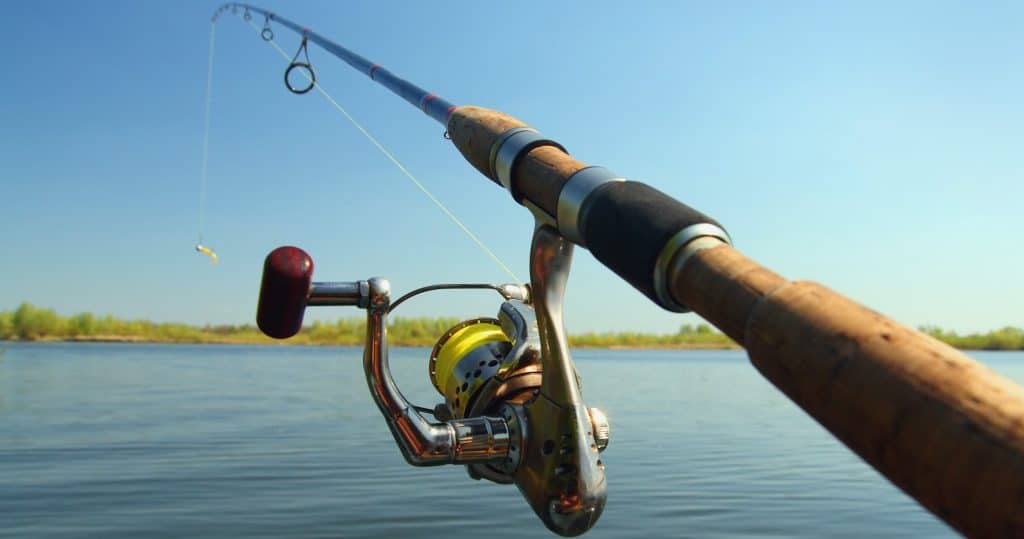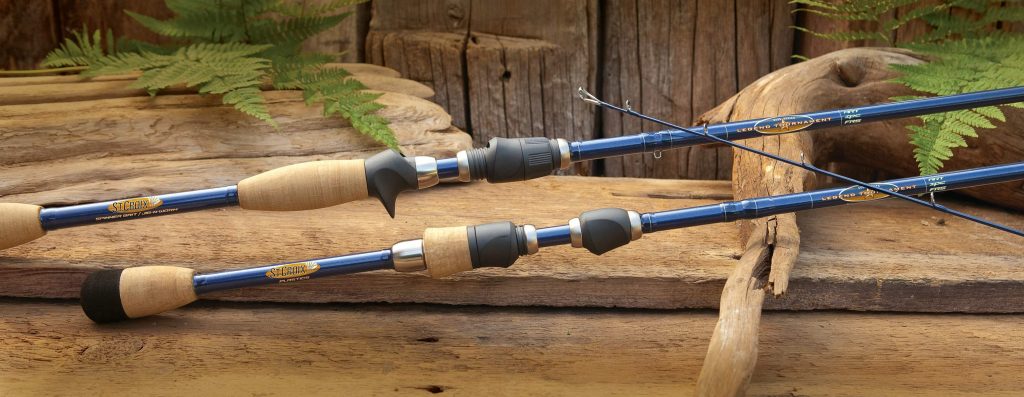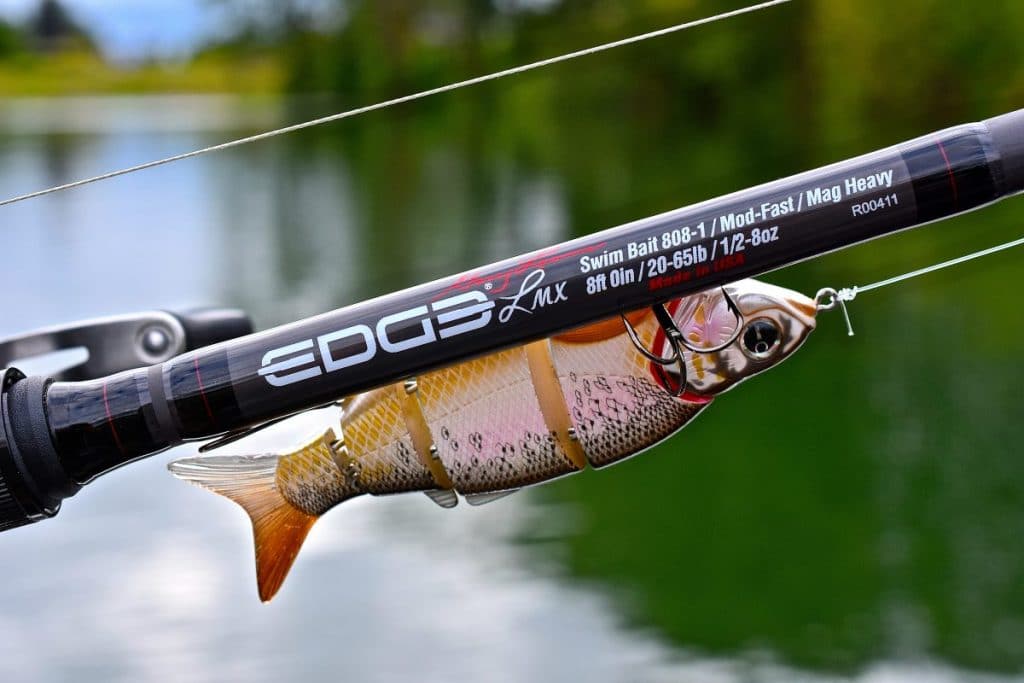

Trout are notoriously easy to spook, which can make fishing for them a challenge even for experienced fishermen. Approaching trout fishing with a heavy, all-purpose fishing rod is a surefire way to ensure you scare off every trout within casting distance. But with an ultralight spinning rod, you can improve the accuracy of your casts and land a fly in the exact spot where trout are likely to bite.
In order to help you find the best spinning rod for trout, we considered a number of important features of these lightweight rods. First, we looked at the material the rod is made of since construction affects weight, durability, and sensitivity to bites. We also considered the lengths of different spinning rods since longer rods will offer longer casting distances. Line weight, which corresponds with rod power and determines what type of line you can use, and the handle material, which controls comfort and sensitivity, were also factors in our search for the perfect spinning rod for trout.
We spent tens of hours researching spinning rods for trout fishing, poring over manufacturer’s specifications, and reading fishermen’s reviews of their favorite rods. The result is our pick of the 5 best spinning rods for trout with the Cadence CR7-5101S-MF Spinning Rod as our Editor’s Choice, highlighted in the table below. Continue reading for detailed reviews of each rod, complete with pros and cons. Our Buying Guide covers everything you need to know about choosing the best spinning rod for your favorite fishing hole. Finally, we sum up our three overall favorite spinning rods for trout on the market today. This spinning rod for trout from Cadence is a favorite among fishermen because it has everything you need to get out on the water and start hauling in fish. The rod is available in a range of lengths from 5’10” to 7’6” so you can choose a size based on the locations you fish most often. On top of that, each of the lengths are available in multiple action types. We particularly like the 6’10” extra fast rod, with a line weight of 6-10 pounds, which is a perfect spinning rod for rainbow trout and can easily adapt to a wide variety of fishing holes. Despite being extremely light, this rod is durable enough to handle medium-sized trout. The graphite blank is reinforced with stainless steel components, particularly in the guide frames and in the reel seat. The split handle is comfortable to hold all day thanks to the combination of cork in the upper part of the handle and EVA foam in the lower part. Fishermen especially liked how sensitive this combination makes the rod, which allows you to respond quickly when you get a bite. Overall, trout fishermen as well as fishermen using heavier versions of this rod for flounder and redfish were quite impressed with the build quality. Moreover, they were impressed that Cadence could offer this rod at such a reasonable price. The only potential downside to this rod is that it is only available in a one-piece construction. That can make traveling with the rod somewhat difficult, but most fishermen didn’t find this to be a problem. The durable graphite and fiberglass construction of this spinning rod from Ugly Stik makes it one of the best spinning rods for brown trout and other hard-fighting trout species. While the rod is weighted for lines of just 6-10 pounds, users report that the ultralight rod is burly enough to handle fish weighing tens of pounds without the tip snapping. For many users, the durability is reason enough to opt for this spinning rod for trout fishing and Ugly Stik includes a seven-year warranty to guarantee the strength of their rod. The construction of the rod has more to offer in terms of comfort and adaptability, too. The 7’ length is perfect for a wide variety of fishing holes, whether you’re headed to the local creek or carrying this rod into the alpine. The split handle is molded with cork to provide an extremely comfortable feel that’s easy to hold and cast all day. The only complaint that users have with this rod is the stainless steel guides, which are cheaply constructed compared to the rest of the rod. Some users found that these guides were responsible for grooving and fraying fishing line, and especially braided line, which required frequently changing out the line and flies on this rod. It’s also worth noting that the reinforced graphite and fiberglass construction of this rod adds weight. While some fishermen liked the extra heft of the rod when reeling in a fish, others found that the weight made it feel unbalanced compared to all-graphite spinning rods for trout. This budget spinning rod for trout from OKUMA is designed for long casts and larger trout, making it an ideal choice for larger creeks and open-ocean fishing. The 8’6” length allows for extra-long casts, although like any longer rod accuracy can be somewhat difficult to nail down. That said, experienced fishermen were quite happy with the feel of this rod for casting and found that the backbone prevented it from whipping around when trying to cast. The rod is constructed from a single graphite carbon blank, which allows it to be lighter than many significantly shorter rods. Most users didn’t find the construction to be overly fragile, but they did warn that the rod needs to be taken care of – the long length and ultralight construction combine to make it easy to break the tip during storage. Users were happy with the stainless steel guides on this rod and didn’t find any issues with fraying line, as for some other spinning rods for trout. The split handle, molded with a cork grip, is comfortable to hold and cast with, and users appreciated how sensitive this rod feels in your hands when a fish goes for your lure. For the price, it’s hard to say anything bad about this rod. But, compared to more expensive spinning rods, users noted that the construction feels slightly cheaper, particularly around the split handle. OKUMA’s one-year warranty is shorter than some more expensive competitors, but this was not a concern for most fishermen. Fenwicks Eagle Spinning Rod is a classic trout rod, perfect for catching rainbow or speckled trout. The rod is available in a wide variety of lengths and line weights, but we liked the 7’ version the best because of the versatility it provides for casting. The medium action and 10-20-pound line weight were also perfect for catching moderately sized trout without concerns that the rod tip would break. The rod is relatively lightweight thanks to the graphite carbon blank and the relatively small split handle. The handle is molded with cork for comfort during a long day of casting, and users found that the rod is quite sensitive when it comes to detecting a nibble from trout. Better yet, this rod is available in either one-piece or two-piece versions. That allows you to decide which is better for you depending on the amount of travel you do and how far a hike in you have to get to your favorite fishing spot. Users had mixed experiences with the construction of this rod. Some found that the rod held up extremely well under stress from storage and fishing, while others found that the rod broke surprisingly easily. Some users also found that the guides were placed in the wrong order, likely pointing to a quality control issue at Fenwicks. It’s also worth noting that while Fenwicks offers a five-year warranty policy, some fishermen had difficulty dealing with the company’s customer service team. This short and light spinning rod from KastKing takes ultralight to a new level. The IM7 graphite construction is built with a small diameter to keep weight to a minimum while maintaining the strength of the rod. Going even further, KastKing used titanium guides in place of the usual stainless steel components and a lightweight two-piece reel seat. The only place where KastKing didn’t focus on cutting weight was in the split handle, which uses EVA foam to provide padding rather than cork. The result of all this weight cutting is that KastKing has created one of the most ultralight spinning rods for trout on the market. The rod is available in a variety of sizes, but we liked the short 5’ model – which weighs just three ounces! – because it capitalizes on the lightweight nature of the rod. With this rod, you can easily cast in bushy creeks or fish high into the alpine. All versions of this rod are constructed in two-pieces to make them easier to carry. Somewhat surprisingly, the lightweight nature of this rod doesn’t take away at all from its durability. Fishermen found this rod to be unfussy about storage and transport, and few report tips breaking even when catching trout that weigh more than five pounds. If anything does break, KastKing offers a 90-day replacement policy – although beware that the warranty is only 150-days compared to the one year or more offered by other manufacturers. Especially given the affordable price of this rod, many fishermen report loving this spinning rod.Quick Summary
Cadence CR7-5101S-MF Spinning Rod
Ugly Stik Elite Spinning Rod
OKUMA Celilo Graphite Lightweight Trout Rod
Fenwicks Eagle Spinning Rod
KastKing Calamus Ultra-Light Spinning Rod
Now that you’ve learned more about our five favorite spinning rods for trout, how do you choose between them to get the rod that’s best for you? Different rods will perform more optimally at some fishing holes than others, depending on the size of the creek or lake or whether you’re fishing in the ocean, the size of the trout you’re trying to catch, and your style of fishing. On top of that, you’ll need to decide what style of spinning rod feels most comfortable for you. In our Buying Guide, we’ll cover all this and more so you can find your perfect spinning rod for trout.
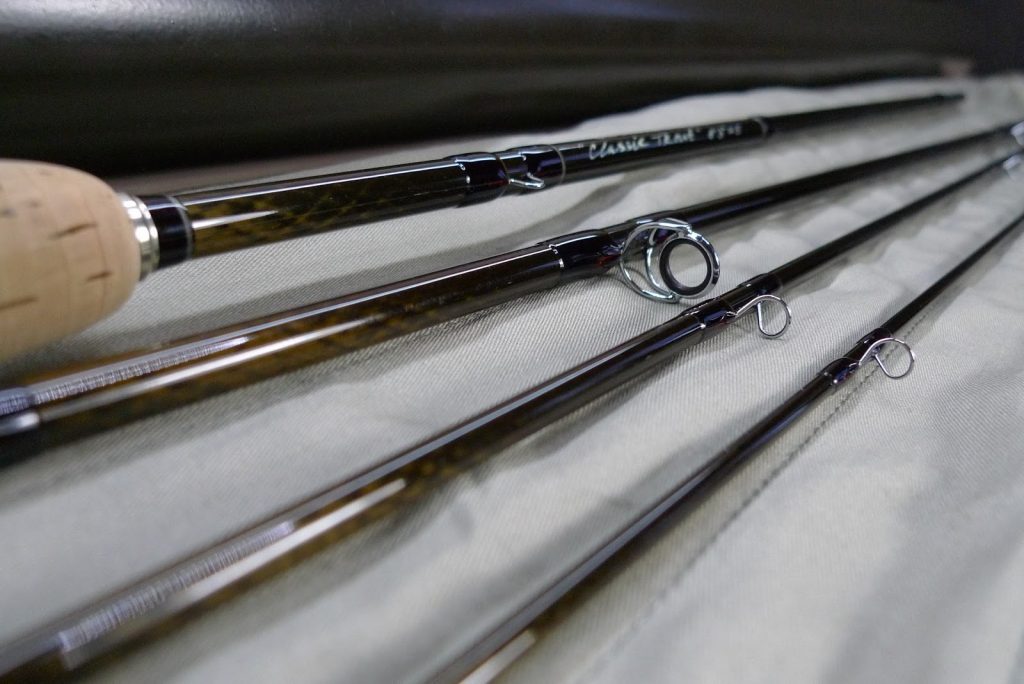
The majority of spinning rods for trout are between 6’ and 8’, although you can find shorter rods like the KastKing Calamus and longer rods like the OKUMA Celilo. All other factors aside, a longer rod will generally cast further than a shorter rod. That’s because it acts as a longer lever and projects the rod tip faster when you cast.
However, casting further isn’t always better and where you plan to go fishing most often should determine what length of rod you use. If you typically fish in relatively open areas, such as on a lake or around alpine streams, then a rod that is 7’ or longer gives you the most flexibility to reach further away with your cast to try to catch trout that haven’t been spooked by your presence.
If you fish around creeks that are choked by trees and undergrowth, though, that extra rod length can be awkward and longer casts can get you into trouble by landing your line in a tangle of branches. In that case, you’re better off with a rod that’s six feet or even shorter, like the KastKing rod.
For the widest variety of uses, aim for a rod that’s around 7’ long like the Fenwicks, Ugly Stik, or Cadence rods.
The majority of spinning rods, including all ultralight spinning rods for trout, are made from graphite carbon blanks. Graphite is extremely lightweight while also being durable enough to handle the forces of casting. However, it’s important to be careful when handling graphite spinning rods because they can snap if bent too much.
Fiberglass spinning rods, like the model from Ugly Stik, are more durable than graphite rods, making them a good choice for big brown trout and other large trout species. These rods are likely to last for years of use, if not an entire lifetime of trout fishing. However, fiberglass blanks are heavier, which can make casting during a long day on the water more tiring for your arms.
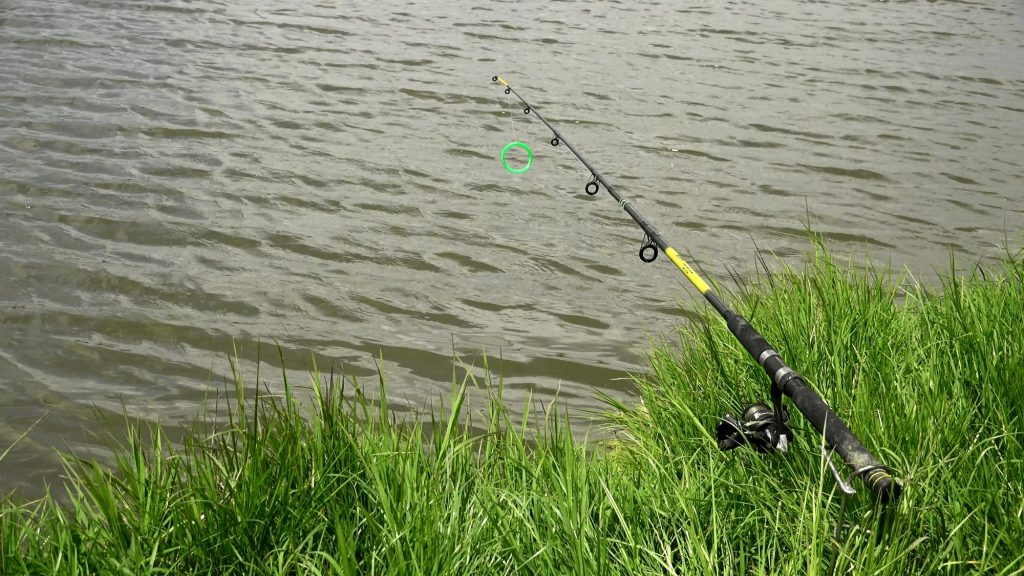
There are a couple things to know about line weight. First, it’s usually based on the weight ratings of mono fishing line – if you are using braided fishing line, you can usually add about 25-50% to your rod’s weight rating. One good way to use the line weight rating is as the upper maximum for the weight of leader you should put on your rod. As long as your leader is lighter than your rod’s line weight, you’re more likely to break your fishing line than your rod.
It’s also important to keep in mind that line weight is not related to the weight of fish you can catch. That’s dependent on the strength of the fish, the flex of your rod, and even the current.
The line weight corresponds roughly to the power of the spinning rod. Ultra-light spinning rods for trout, like the Cadence, Ugly Stik, and KastKing rods, have maximum line weights less than 10 pounds. They are very flexible and can be very fun to use when trying to reel in a small to moderately sized trout. Light spinning rods with 10-20-pound line weights, like the OKUMA and Fenwicks rods, have a little less flex and are more burly for reeling in larger trout.
The reel seats on spinning rods for trout fishing are relatively basic, and what design is best largely comes down to your comfort. However, it’s important to get a reel seat that feels comfortable to hold – all other aspects of a spinning rod won’t matter if you are uncomfortable holding your rod in your hand for a full day on the water.
Many fishermen prefer a reel seat with a cutout on the bottom that allows them to feel the rod blank with their finger, since this allows for more sensitivity when a fish nibbles on a fly. Reel seats vary in width as well as in the size of the nut, and the trigger placement can vary as well.
Rod handles are available in three different grip types: split grip, pistol grip, and full grip. Most spinning rods for trout, including all of the rods we reviewed, use split grips because these are better for light tackle and accurate casting. Plus, the reduce material in split grip rods reduce the overall weight of your spinning rod and allow the rod to be more sensitive to nibbles.
On top of the style of grip, it’s important to consider what the handle is made of – cork, EVA foam, or both. Cork, which is used in the grips of the Fenwicks, Ugly Stik, and OKUMA rods, is considered more comfortable for most anglers, especially when the temperature is high and your hands are sweating. Still, some fishermen prefer the soft and contoured feel of EVA foam in their rod handle.
Our three overall favorite spinning rods for trout on the market today are the Cadence CR7-5101S-MF Spinning Rod, the KastKing Calamus Ultra-Light Spinning Rod, and the Ugly Stik Elite Spinning Rod. The Ugly Stik rod is well-received among trout fishermen because of its burly graphite and fiberglass construction – you never have to worry about breaking this rod when taking on a heavy brown trout or a large rainbow trout. However, fishermen note that this rod has some issues with the guides, which are known to fray your line. The KastKing ultralight spinning rod focused on minimizing weight, using an ultra-thin graphite blank and titanium guides. This rod is surprisingly durable while weighing just three ounces for the 5’ version, making it the perfect choice for a wide variety of trout fishermen. We feel that the Cadence rod is the overall best spinning rod for trout thanks to its all-around excellent construction and usability. The graphite blank is combined with a cork and EVA foam split handle to create a lightweight, sensitive, and comfortable spinning rod that can be used successfully at virtually any fishing hole. Better yet, the Cadence rod is available at a price that’s within reach for amateur and expert trout fishermen alike.


